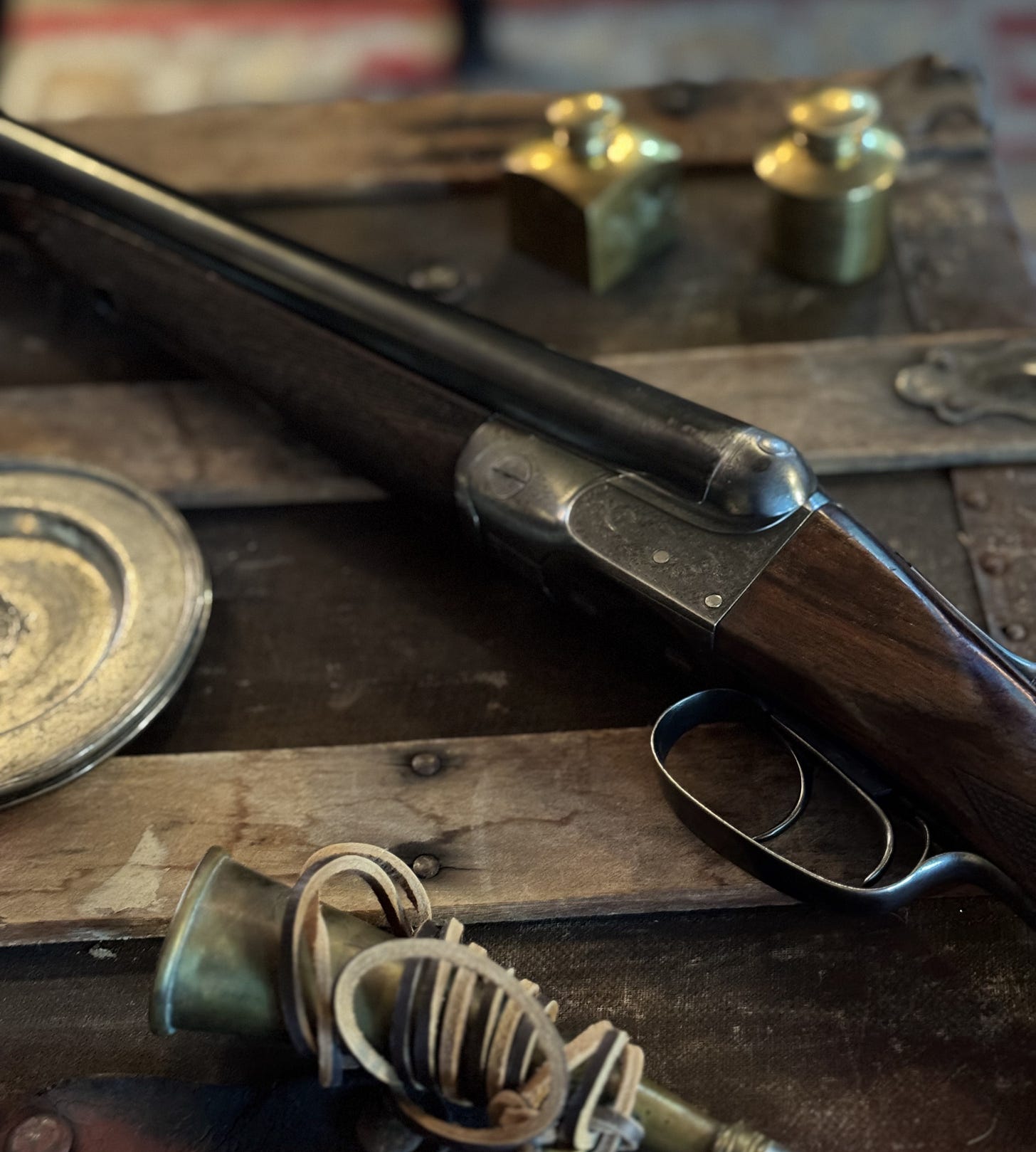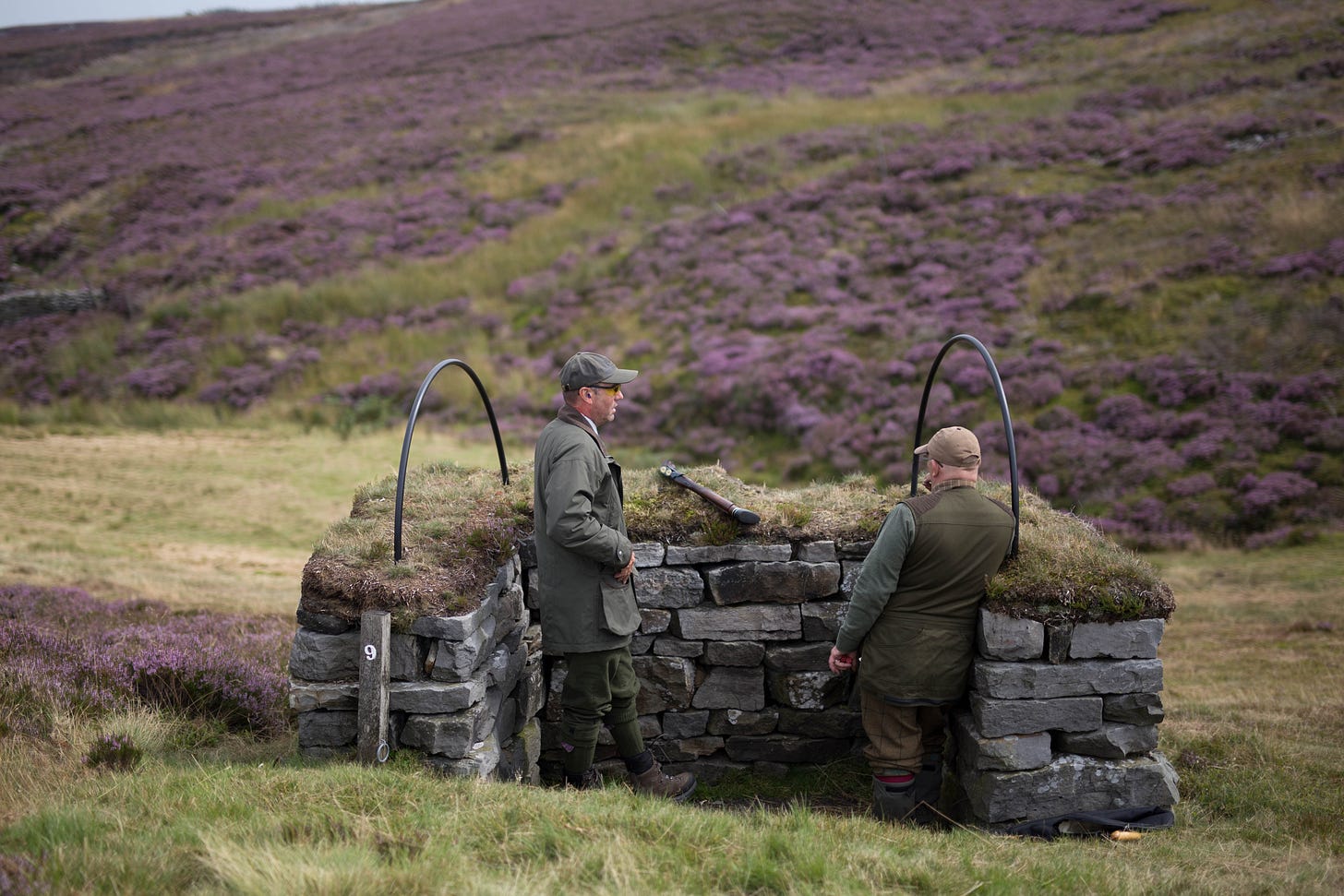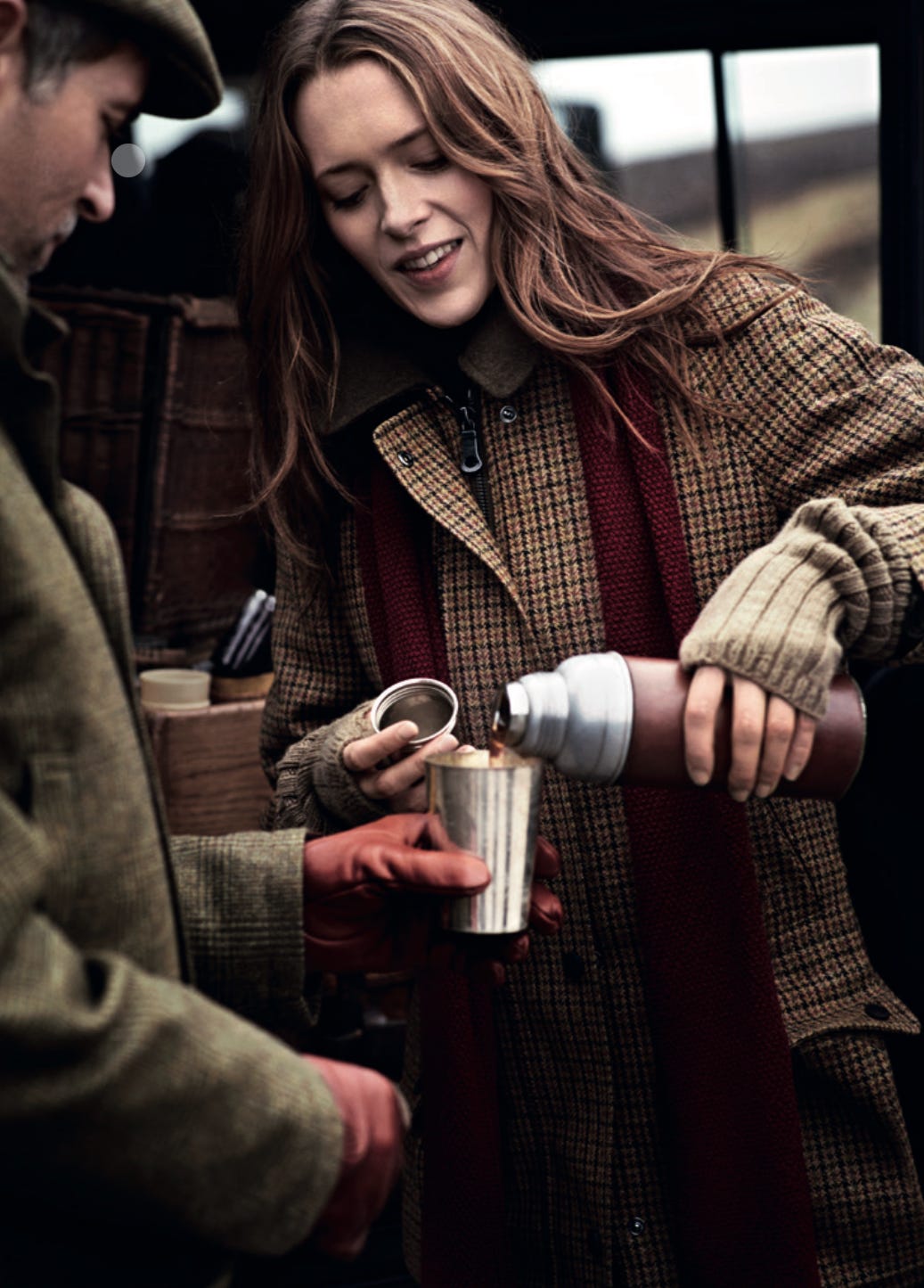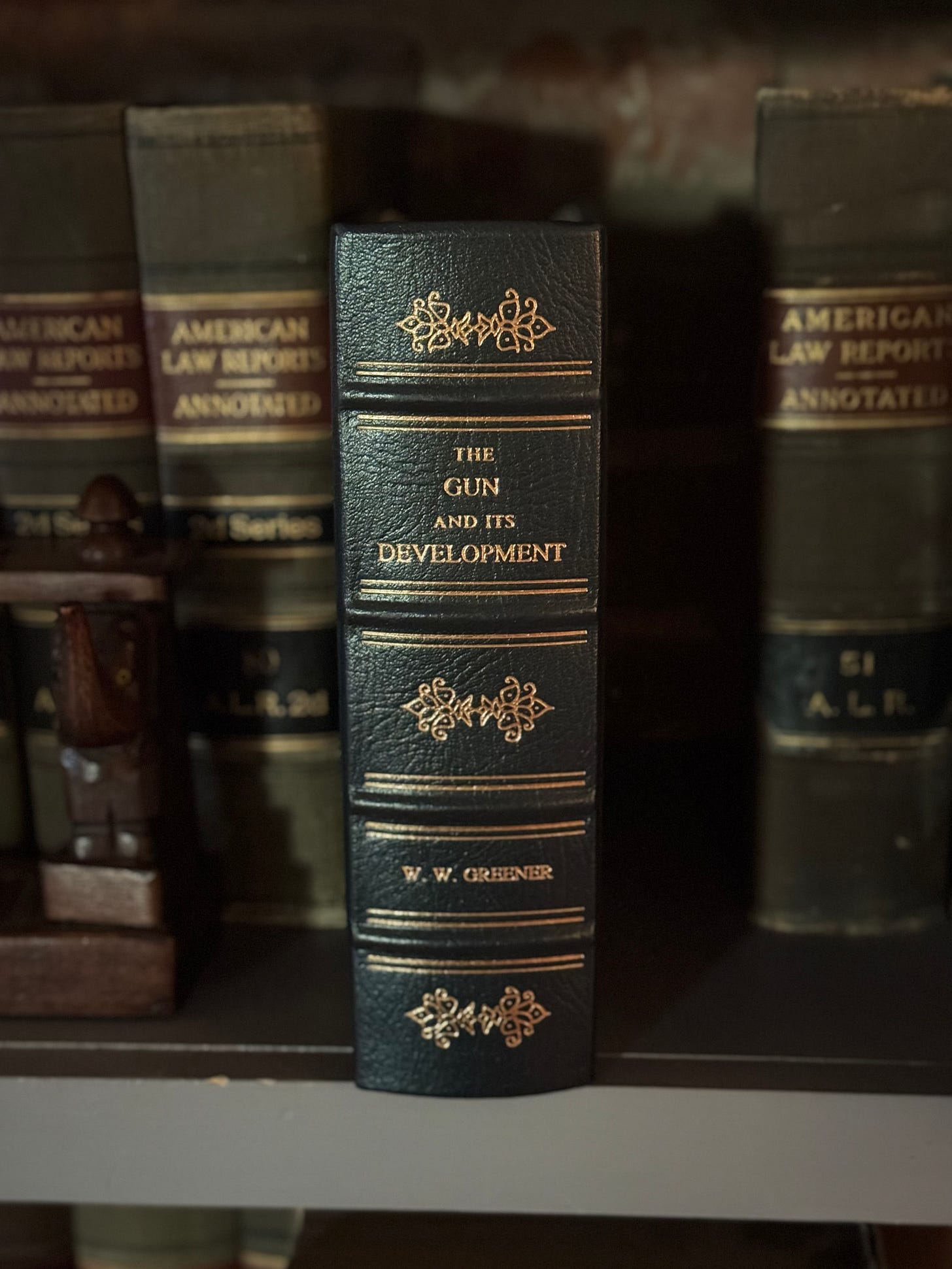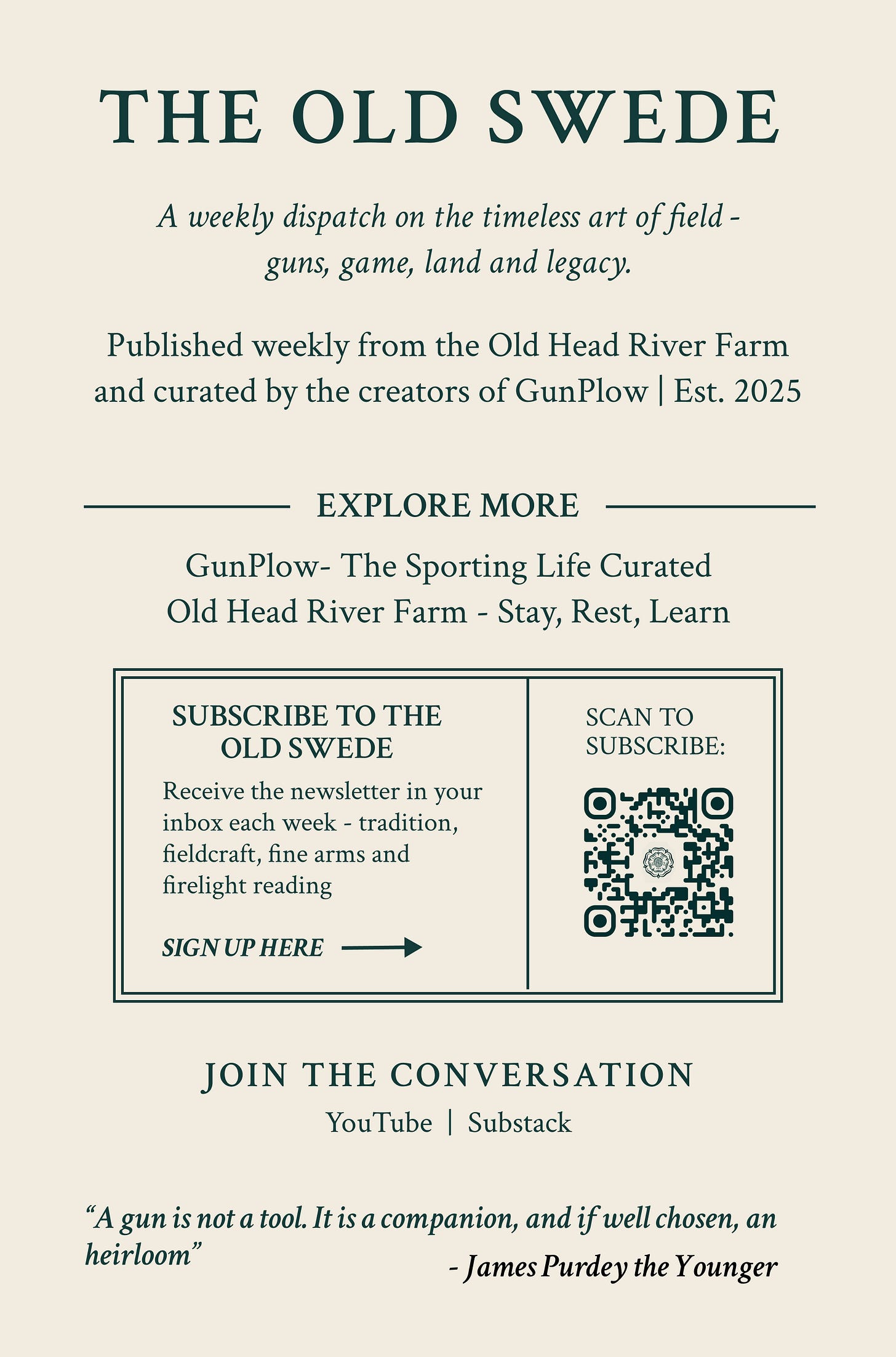The Old Swede: August 25, 2025
The Guns and The Ground: Where history, dogs, and the moor converge.
Featured Gunmaker
W.W. Greener — Architect of Modern Gunmaking
William Wellington Greener (1834–1921) was one of the most influential figures in the history of British gunmaking. Son of William Greener, he expanded the Birmingham-based firm into a world-renowned name by the late 19th century.
Greener’s innovations included choke boring, perfected in the 1870s, which revolutionized shotgun performance by dramatically improving pattern density. He also championed the Martini–Henry falling block rifle (famously used at Rorke’s Drift in 1879) and produced a wide range of sporting, military, and experimental arms.
Perhaps his most lasting contribution is literary. His book The Gun and Its Development (1881, with later editions) remains one of the most comprehensive texts on firearms history and mechanics ever published. It secured his reputation as both practitioner and historian.
Today, vintage W.W. Greener shotguns are prized for their robust design, often distinguished by Greener’s cross-bolt action. His legacy endures not just in steel and walnut, but in the very language and science of shooting.This Substack is reader-supported. To receive new posts and support my work, consider becoming a free or paid subscriber.
Shooting School
The Loader — More Than a Pair of Hands
On a busy driven day, a skilled loader is more than just someone who hands you the next gun. He is part coach, part timekeeper, and part moral compass.
A great loader ensures seamless double gunning—swapping one gun for the next in choreographed precision without hesitation. He manages cartridges, safety, and tempo. In the heat of a drive, when birds stream often and fast, his quiet rhythm calms the Gun and keeps the field safe.
Beyond mechanics, a loader provides subtle instruction. With decades of experience, many loaders double as coaches, reminding the Gun about footwork, follow-through, or safe angles. At the peg, he is also a source of encouragement—helping shooters recover from a miss, reset their composure, and prepare for the next bird.
In Britain, loaders are trained through formal guilds and many estates insist on them for visiting Guns. Their presence reflects the tradition that shooting is not solitary, but a shared craft—an orchestra where the loader is conductor of pace.
Estate Visit
Bettws Hall, Wales
Nestled in the rolling hills of Powys, Wales, Bettws Hall is one of the most prestigious shooting estates in the UK. Since its founding in the 1980s, it has grown into a destination synonymous with high birds, refined hospitality, and careful conservation (Bettws Hall).
Bettws is particularly known for its partridge and pheasant drives, presented in the steep valleys of the Welsh Marches. The topography allows for birds of exceptional height and speed, often compared favorably with the great estates of Exmoor or North Yorkshire. Guns stand on narrow pegs at the base of wooded banks, with pheasants curling high overhead in exhilarating flights.
The estate prides itself on sustainability. Habitat management, cover crop rotation, and predator control are handled with precision, ensuring healthy bird populations and biodiversity across the 20,000 acres it manages. Its in-house game farm, one of the most advanced in Europe, supplies not only Bettws but estates across the UK.
Hospitality is integral. Days often conclude with traditional Welsh dishes—lamb cawl, rarebit, or game terrines—paired with fine wines in the lodges. The have several shoots to choose from; Brigands, Vaynor, Maesmwar, Bettws Hall, Kempton and Plas Dinam.
With a mix of modern professionalism and timeless tradition, Bettws remains a jewel of Welsh shooting.
Gun Dog & Fieldcraft Highlight
Dogs on Leash at the Peg
At a driven day, discipline begins before the first bird rises. One of the most overlooked yet essential practices is keeping dogs on leash at the peg.
The flurry of a drive—beaters calling, whistles blowing, birds bursting overhead—can overstimulate even the best-trained dog. A spaniel breaking early or a labrador dashing after a falling bird risks spoiling the drive, disturbing other Guns, or creating dangerous situations.
Etiquette dictates that dogs remain tethered beside their handler until the drive is called over. Only then do pickers-up, stationed behind the line, release their dogs to work systematically. For Guns who bring their own companions, a leather slip lead or heather stick tie-off ensures control without fuss.
This rule is not about limiting the dog’s joy—it’s about respect: for safety, for the beaters, and for the birds. When the horn signals the end of the drive, the controlled release becomes all the more satisfying, as dogs sweep the moor or coverts in organized retrieves.
In the best shoots, this discipline adds to the artistry of the day—man, dog, and field working in harmony, each in their time.
Shoot Lunch & Wine Pairing
Elevenses
No part of a driven day is as beloved as elevenses—that mid-morning pause between drives when hospitality warms hands and spirits.
Traditionally taken in the field, elevenses is served from the back of a gun bus, on a trestle table, or beside a roaring fire. Staples include sausage rolls, pork pies, and game pâtés, often accompanied by stilton or a wedge of cheddar. Sweet touches—flapjacks, fruit cake, or shortbread—round out the spread.
Drinks are as important as the food. The classic choice is a sloe gin or the classic Bullshot on cold days, offered in small glasses to fortify against the chill. For those abstaining, strong tea or coffee poured from enamel flasks is equally traditional.
The art of elevenses is balance: hearty enough to sustain, light enough not to blunt reflexes for the next drive. It is also where camaraderie flourishes. Guns exchange stories, rib one another about missed birds, and toast to the land and keepers who make the day possible.
Wine is rare at elevenses, but a rich tawny port or small glass of Madeira may appear on special days—linking the morning’s exertion to the elegance of luncheon ahead.
Quote from the GunPlow Library
“The sporting gun has had a history almost as romantic as that of the sword. Its development has followed the advance of civilization, the needs of the chase, and the march of invention. No one can handle a well-made gun without feeling that he has in his hands an instrument at once perfect in form and wonderful in its possibilities.”
— W.W. Greener, The Gun and Its Development (1881; 9th ed. 1910)
GunPlow Classic Library Coming Soon



